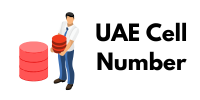Landing pages are critical touchpoints in the customer journey, serving as dedicated gateways designed to convert visitors into leads or customers. Their effectiveness directly impacts marketing ROI, making continuous optimization a necessity. Among the various optimization techniques, A/B testing stands out as a rigorous, data-driven approach that allows marketers to compare two versions of a landing page element to determine which performs better. This essay will explore a comprehensive set of A/B tests that can be strategically implemented to enhance landing page performance, focusing on key areas such as headlines, calls to action, visual elements, form design, and overall page layout.
1. Testing Headlines and Value Propositions
The headline is often the first element a visitor encounters, and its ability to immediately communicate value and capture attention is paramount. A/B tests on headlines should focus on variations that articulate different value propositions, benefits, or urgency. For example, one test could compare a headline emphasizing a core benefit (“Achieve X with Y”) against one highlighting a pain point it solves (“Tired of Z? Solve it with Y”). Another test might pit a direct, concise headline against a more evocative or question-based one. Beyond the main headline, testing sub-headlines and the initial paragraph of body copy can further refine the articulation of the offer, ensuring the visitor quickly grasps what is being offered and why it is relevant to them. The goal is to identify the phrasing that resonates most strongly with the target audience, leading to higher engagement and conversion rates.
2. Optimizing Calls to Action (CTAs)
The Call to Action (CTA) is arguably the most crucial element on a landing page, directly guiding the visitor towards the desired conversion. A/B testing CTAs involves experimenting with various aspects, including their text, size, color, placement, and surrounding microcopy. For text, variations could range from action-oriented verbs (“Download Now,” “Get Started”) to benefit-driven phrases (“Claim Your Free Trial,” “Unlock Your Potential”). Testing different colors can reveal which hues stand out most effectively against the page’s background without being jarring, while size adjustments can determine the optimal visual prominence. Placement, whether above the fold, integrated within the content, or repeated, also significantly impacts visibility and click-through rates. Furthermore, small phrases or sentences placed near the CTA (microcopy) can add a sense of urgency, provide reassurance, or clarify the next step, and testing these variations can further boost conversion.
3. Evaluating Visual Elements and Media
Visuals, including images, videos, and graphics, play a significant role in conveying messages, building trust, and engaging visitors. A/B tests in this area can involve comparing different types of imagery (e.g., lifestyle photos vs. product shots, professional models vs. diverse user representations). For video, testing short, engaging clips against longer, more detailed explanations can reveal audience preferences. The presence or absence of background videos, the use of animated elements, and even the positioning and size of images can all be subjected to A/B tests. The objective is to determine which visual elements most effectively support the landing page’s message, evoke the desired emotions, and ultimately contribute to a higher conversion rate.
4. Refining Form Design and Fields
For landing pages designed to capture leads, the conversion form is a critical component. A/B testing form design focuses on minimizing friction and maximizing completion rates. This can involve testing the number of fields required: often, fewer fields lead to higher conversions, but sometimes more qualified leads are gathered with slightly more detailed forms. Testing different field types (e.g., dropdowns vs. open text fields), the wording of form labels, and the presence of pre-filled information can also yield valuable insights. Furthermore, A/B tests can explore the impact of inline validation, error messages, and privacy assurances on form submission rates. The goal is to strike a balance between gathering necessary information and ensuring the form is as user-friendly and unintimidating as possible.
5. Experimenting with Page Layout and Structure
The overall layout and structure of a landing page significantly influence user experience and information consumption. A/B tests in this domain can compare different section orders, the use of white space, the presence of testimonials or trust signals, and the overall length of the page. For instance, testing a long-form landing page with detailed information against a shorter, more concise version can reveal audience preferences for content depth. Experimenting with the placement of social proof elements like customer testimonials, security badges, or awards can determine their impact on credibility and conversion. Even subtle changes, such as the arrangement of benefit points or the visual hierarchy of information, can be A/B tested to optimize the flow and clarity of the page.
In conclusion, A/B testing is an indispensable
By systematically testing variations in headlines, CTAs, visual elements, form design, and page layout, marketers can gain invaluable insights into their audience’s preferences and behaviors. The iterative nature of A/B testing, where each test provides data-backed evidence for future optimizations, ensures continuous improvement and a higher return on marketing investments. Embracing a culture of experimentation on landing pages is not merely about achieving incremental gains; it’s about building a robust, data-driven strategy that consistently transforms visitors into valuable leads and loyal customers.
